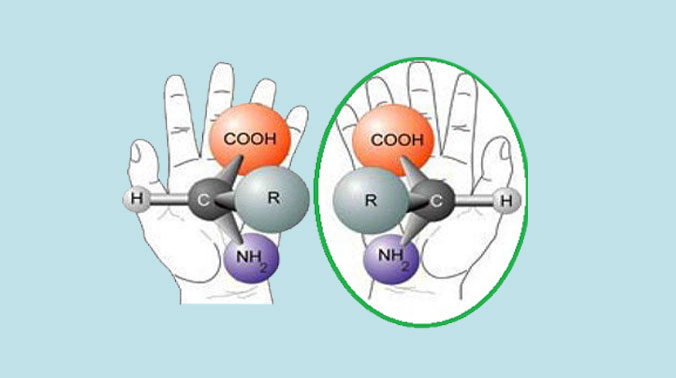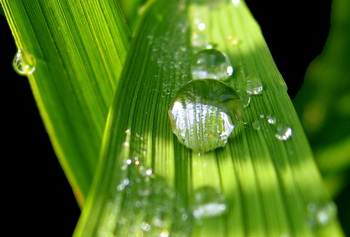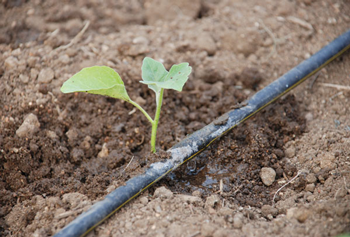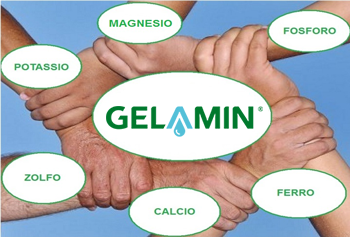Protein hydrolysates are products obtained by chemical, enzymatic or mixed hydrolysis of organic materials based on proteins.
Hydrolysis causes a substance to split due to the effect of water, and it can be
► Chemical: with the aid of a chemical substance and therefore with an acidic or basic pH and in general, at a high temperature.
► Enzimatic: with a low temperature (40-50 ° C) and a pH close to neutral.
► Mixed: chemical + enzimatic.
During the enzymatic hydrolysis process, protein fractions of variable length (polypeptides, peptides, and free aminoacids) are formed.
Depending on the process adopted, very different protein hydrolysates can be obtained with different agronomic properties.
The main parameters by which the quality of a fluid protein hydrolyzate is measured are:
► % total aminoacids;
► molecular weight of the various components;
► degree of racemization %: dextrorotatory aminoacids / total aminoacids.
Amino acids can have two types of structure, levorotatory or dextrorotatory. The L form (levorotatory), is biologically active and recognized by plants.

In comparison to chemical hydrolysis, the enzymatic one allows obtaining a high content of levorotatory amino acids (L. form). These amino acids have a relevant role in the plant, they have a biostimulant effect because they directly act on the plant’s physiology. Therefore, the protein hydrolysates produced by the enzymatic hydrolysis process are characterized by high quality.
Depending on the method of application, the fluid-protein hydrolysates obtained from the enzymatic hydrolysis process have several roles on the plants’ physiology.

Applying L. amino acids and peptides by foliar application they are easily absorbed by the leaf’s apparatus and therefore, they are used directly by the vegetal cell in several biochemical processes. Furthermore, L. amino acids and peptides have a biostimulant action on the vegetal cell, i.e., they support the plant to overcome the abiotic stress (jump in temperatures, late-spring frost, high salinity, and drought, etc.) and they stimulate the biosynthesis of proteins and DNA.
Moreover, L. amino acids stimulate photosynthesis, as well as cell multiplication and distension, enhancing the vegetative development, the fruits swelling, and the vegetative restart, etc.
Well, using protein hydrolysates by foliar application allows a fast absorption and translocation of amino acids, peptides, and polypeptides into the plant. These compounds are organic molecules consisting of organic Nitrogen rapidly bioavailable for plants.

Applying L. amino acids and peptides by fertigation, the protein hydrolysates enhance the soil’s organic fertility because they act as an organic substrate for the multiplication of the soil microflora.
In this way, the physic and chemical soil conditions are enhanced, and nutrients are bioavailable to plants. Another benefit is the high percentage of organic Nitrogen that allows a high nutritional action to plants.

In addition, fluid-protein hydrolysates obtained from enzymatic hydrolysis have a “complexing” capacity, which allows the absorption and translocation of those elements normally unavailable for plants (Fe, B, Ca, Mg)..
The “complexing” capacity is due to amino acids in L. form. Therefore, the higher is the content of active amino acids (in L. form), the higher will be the ability to supply microelements to plant.
In the end, fluid-protein hydrolysates obtained from enzymatic hydrolysis have a “co-formulant” action. This capacity allows mixing them with other products available on the market (fertilizers, commodities, PPPs, PGRs, etc.) improving their efficacy and absorption into the plant.
